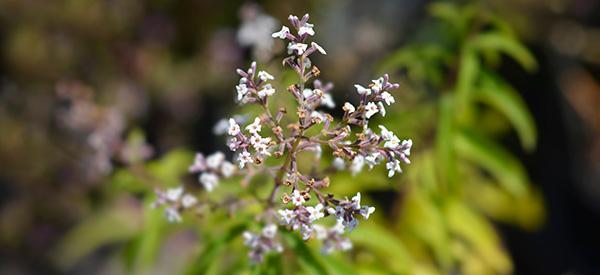
Lemon Verbena
Lemon verbena (Aloysia citriodora) is a perennial flowering shrub of the verbena family. This dainty, lemon-scented flower is used as a culinary spice, an herbal medicine, aromatherapy essential oil, and perfume fragrance. Its blossom symbolizes sensitivity and their leaves graced the hand-sewn gowns of women in the Victorian era. Lemon verbena is quite versatile for its many uses, and it is mainly cultivated today for its essential oil and culinary value.
In the garden, it is best grown in containers or lining along patios and walkways. It is also useful for gardens meant for blind people because it dispels a soothing aroma. It is not considered aesthetically ornamental since its flowers are sensitive to climate conditions. Potted lemon verbena may not even grow flowers at all.
The native people in South America were the first ones to use lemon verbena in medicine and cuisines. In ancient times, the plant thrived in the wild until locals used it as insect repellent because of its strong scent. In the 17th century, lemon verbena reached Europe through the Spanish colonizers. In England, it was used as a fragrance, flavoring, and perfume soak for clothing. The migrating Europeans then introduced it to many regions throughout Asia, Africa, Australia, and North America.
Where Lemon Verbena Is Found
Lemon verbena is a plant native to Argentina, Bolivia, and most parts of Southern America. They can thrive worldwide and fare better in regions with a warm and sunny climate. It is now cultivated in many home gardens, and grown as specialty herbs in many specialty gardens. Fresh lemon verbena can be available in local farmer’s markets and distributors. Presently, Morocco, Algeria, and France cultivate lemon verbena for its essential oils.
⇒ The Complete Map of Edible Plants: Find Out What You Have in Your Area! (Video)
How To Identify Lemon Verbena
Lemon verbena possesses a strong aroma that primarily identifies the plant. The plant is bushy, and has dainty but showy flowers that bloom in summer and fall. It has similarities to lemon where it got its name and makes it a good cooking substitute if lemon is unavailable.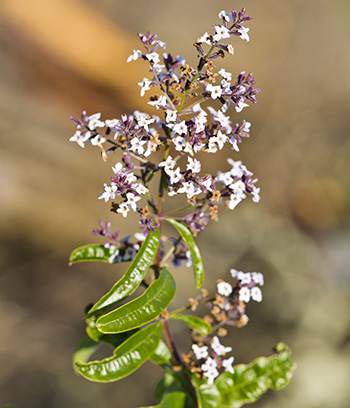
- Leaves. The lance-shaped leaves of lemon verbena are pointed. They are opposite and are formed in whorls of three to four in a stem. Generally, they are toothless, but some may appear slightly toothed. Each leaf is about 8 cm, glossy, but somewhat rough to the touch. It is the leaves that emit the strong lemon scent when bruised.
- Flowers. Lemon verbena bears white or pale purple flowers with an almost bluish tinge. The flowers are tubular with two equal lips and toothed and hairy calyx. They are short-stalked and arranged in small clusters. Each cluster bears numerous flowers.
- Fruits and Seeds. After the verbena flowers bloom and fade, tiny fruit pods will form. It will start as green pods that turn brown as it matures. The pods contain numerous tiny black seeds that are also green when young and turn brown when developed. Once mature, the pods will crack open to release the seeds.
- Roots. Lemon verbena has large and clumping roots that are useful against soil erosion.
- Stem. Lemon verbena can grow up to 3 meters tall. It has branching and woody stems that can become leggy when left alone to grow.⇒ Plant Identification Guide – 400 Wild Plants That You Can Forage For (Video)
Aloysia citriodora is one of the plants from the Verbenacaea or verbena family with about 250 related species. It is also known as lemon bee brush, lemon vervain, lemon-scented verbena, or Herb Louisa.
The A. citriodora was reclassified several times in history. Thus, its older sources may also identify lemon verbena as Lippia citriodora, Aloysia triphylla, Verbena triphylla, L. triphylla, or Zappania citriodora.
How To Grow Lemon Verbena
A pot of lemon verbena provides leaves for culinary and medicinal use. It will also fill the home with a refreshing fragrance.
Lemon verbena is frost-sensitive and may require extra care to flourish every year. The best planting time is in spring since it requires some sun and moisture. Lemon verbena can be propagated either through their seeds or vegetative cutting.
Growing Lemon Verbena from Seeds
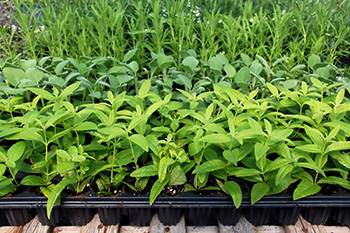 Lemon verbena can grow through seeds that you can find in some online or local herb stores. Growing them in a colder environment can be a challenge, but will still work. If you should grow lemon verbena from seeds, sow them several weeks before the last frost. When confined to a container, lemon verbena may not bear flowers at all.
Lemon verbena can grow through seeds that you can find in some online or local herb stores. Growing them in a colder environment can be a challenge, but will still work. If you should grow lemon verbena from seeds, sow them several weeks before the last frost. When confined to a container, lemon verbena may not bear flowers at all.
Start the lemon verbena seeds in a tray with a good garden soil mix of peat moss or compost. Sow the seeds at least an inch apart over the surface and cover them slightly with soil. Moisten the soil daily until the seeds germinate for at least 20 days. The germination can take longer depending on the conduciveness of its environment.
Transplant the lemon verbena in a large pot with at least a 12-inch diameter and ample drainage holes. You may opt to add pebbles to the bottom layer of the pot before adding loosely packed organic soil. Water the plant regularly, but do not let it run soggy. Keep the pot indoors in winter and water them once a week.
Alternatively, you can directly sow lemon verbena seeds in the garden if you live in a warm tropical climate.
Growing Lemon Verbena from Cuttings
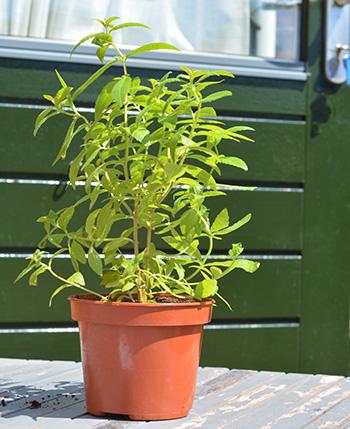 If you want to propagate an existing lemon verbena plant, obtain a stem cutting with a leaf node in late spring. Plant it in a sterile, potting mix about an inch deep. You may use a rooting hormone for it though it is not really necessary.
If you want to propagate an existing lemon verbena plant, obtain a stem cutting with a leaf node in late spring. Plant it in a sterile, potting mix about an inch deep. You may use a rooting hormone for it though it is not really necessary.
Moisten the soil and provide humidity by placing the pot in a large plastic bag with a closed bottom. Tie the open end and allow about an inch of opening for moisture to escape. Mist the cutting if they feel dry and keep the soil slightly moist all the time.
You can check for the roots by gently tugging the plant to feel for any resistance. If it does, the plant has already developed. Remove the plastic bag and continue growing it for about two weeks before transferring it to a permanent container.
⇒ 10 Plants That You Should Never Plant Together (Video)
Plant Care and Maintenance
Lemon verbena often drops its leaves and enters dormancy in winter. Overwinter them indoors and reduce watering as the temperature starts to cool down. Cut back the plant for about a couple of inches from the ground after the first hard frost. Cover the stub with soil and top it with four to five layers of mulch.
The lemon verbena often requires the following plant care to grow in the best of health: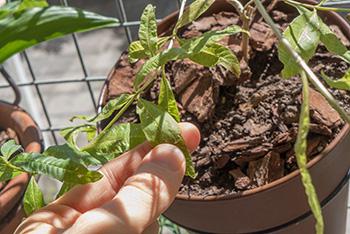
- Full sun
- Sandy and well-drained soil
- Soil pH is between 7.4 to 8.4
- Regular watering but not overflowing
- Regular pruning
- General fertilizer every few months
- Misting when indoors to prevent pests
How To Harvest Lemon Verbena
It is ready for harvest when the lemon verbena is about ten inches tall with an ample number of leaves. The plant is most flavorful and potent during the bloom stage, so ideally, harvest lemon verbena as it flowers.
Harvest the plant by snipping off within ¼ of the leaf or node. Tiny buds or blossoms of the lemon verbena can be used in the same way as their leaves. You can use the fresh lemon verbena sprigs by chopping or using the leaves whole. You may also dry them thoroughly and store them in airtight containers.
What Lemon Verbena Is Good For And Natural Remedies Made From It
Lemon verbena is an aromatic herb rich in volatile oil for many medicinal benefits. Its essential oils are mostly used in the treatment of digestive ailments such as indigestion, dyspepsia, and flatulence.
Teas or infusions of lemon verbena are an outstanding cure for symptoms associated with colds and flu. It is an expectorant that loosens the mucus and phlegm to expel bacteria and other pathogens from the body. It is also an effective herb for treating asthma and other inflammation of the respiratory system.
⇒ A Simple “At-Home” Protocol for the Flu and Other Respiratory Issues (Video)
The anti-inflammatory property of lemon verbena is not only associated with the regions of the lungs, but can also help alleviate joint pains caused by arthritis or injuries. It reduces the pain and speeds up the healing process of the joints while promoting better mobility.
The calming property of lemon verbena initiates relief for anxiety and mood disorders. It can relieve chronic stress and other nervous afflictions.
Lemon verbena can boost immunity by reducing oxidative stress. It can further aid in promoting white blood cells to increase the body’s immune system. By lowering the oxidative stress, it distracts cell mutation to prevent chronic diseases like cancer.
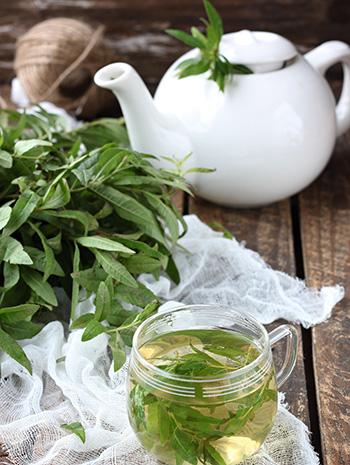
It may also ward off muscle damage incurred in stringent exercise and physical activities.
The therapeutic benefits of lemon verbena contribute to the following:
- Digestive health
- Respiratory health
- Nervous health
- Muscle restoration
- Joint pain management
- Prevention of chronic and debilitating diseases
- Weight loss management
- Immune booster
- Skin problems
- Mouth problems
⇒ My Grandmother (89) Uses This Plant For Respiratory Problems (Video)
What Parts Of The Lemon Verbena Are Used For Remedies?
Lemon Verbena is a versatile herb that is valuable in the kitchen and for treating many ailments. The whole plant is useful, but it is the leaves that are mostly consumed. They are processed for both internal and external use.
The fresh and dried leaves of lemon verbena are traditionally used as an air freshener.
In its raw form, the leaves are consumed and added to salads and sandwiches. Dried leaves are packed in sachets for use in aromatherapy and potpourris.
Lemon verbena is presented in many herbal supplement forms like essential oil, powder, tincture, or capsules. These are widely available in many drugstores and online herbal stores.
Tangy Lemon Verbena Cookies
Ingredients:
- 2 ½ cups all-purpose flour

- 2 tbsp dried verbena leaves
- 2 tsp baking powder
- ¼ tsp salt
- 1 cup butter, softened
- 1 1/2 cup sugar
- 2 eggs
- 1 tsp vanilla extract
Steps:
- Combine flour, lemon verbena leaves, baking powder, and salt and set them aside.

- Beat butter on medium for 30 seconds and add sugar, egg, and vanilla until well combined.

- Add half of the dry ingredient mixture and mix well.

- Stir in the remaining ingredients and mix well until combined.

- Scoop the dough into rounded teaspoonfuls and drop them two inches apart on an ungreased cookie sheet.

- Bake in the oven at 350⁰F for 8 to 10 minutes or until the edges are lightly browned.

- Cool in wire racks and enjoy.

These cookies are easily enjoyable with their delicious taste. This pleasantly-flavored cookie with a delicious lemon verbena tang is a great mood booster. The subtle flavor can help calm down the nerves.
The appropriate dose of lemon verbena depends on several factors such as the user’s age, health, and several other conditions. At this time there is not enough scientific information to determine an appropriate range of doses for lemon verbena.
What Plants Resemble Lemon Verbena
| Features | Lemon Verbena (Aloysia citriodora) | Lemon Myrtle (Backhousia citriodora) | Vervain (Verbena officinalis) |
|---|---|---|---|
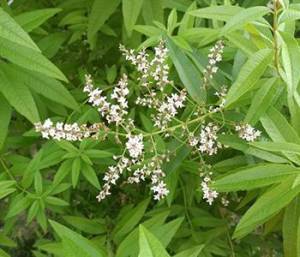 | 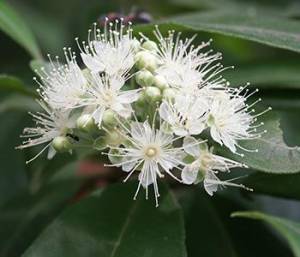 | 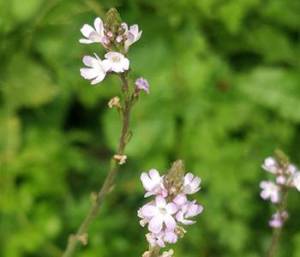 | |
| Size | 6 feet | > 10 feet | 38″ – 40” inches |
| Leaves | Pale-green; lanced-shaped; pointed; glossy; hairy | Green; lanced-shape; pointed; glossy | Opposite; lanced-shaped; green; saw-edge; hairy |
| Flowers | White/ pale purple/ bluish; tubular; clusters | Creamy white; clusters; tubular | Purplish blue; slender; tubular; clusters |
| Fruits/Seeds | Green to brown pods; numerous seeds | Nut-like seed capsule; several seeds | Coral red; brown or oval |
| Stem | Branching; woody | Branching; woody | Rough; branched; leafy |
| Scent | Sweet lemon scent | Lemon-like scent | No odor |
Warnings And Cautions
Lemon verbena has no known medical interactions pending further studies. It does not also support safety with its lack of information when used by pregnant and lactating mothers. Avoid using lemon verbena if you are within this group to be safe.
The leaves of lemon verbena have terpene-rich volatile oil that may cause kidney irritation. Thus, patients with renal diseases should stay away from using its supplements.
Lemon verbena may also cause irritation like contact hypersensitivity. Using its essential oil on the skin increases the risk of skin sensitivity to sunlight.
Prolonged oral intake of any lemon verbena herbal supplements and infusion may also cause gastric irritation. Use the herb with caution and in moderation.
Before using any herb, always consult your physician, especially for people taking any maintenance medications or with underlying medical conditions.
You may also like:
 How to Make an Immunity Boosting Shot with Celery, Spinach, Ginger, Lemon, and Manuka Honey
How to Make an Immunity Boosting Shot with Celery, Spinach, Ginger, Lemon, and Manuka Honey
How I Got Rid Of All My Digestive Problems For Good (Works Every Time!) (Video)
Homemade White Cell Boosting Juice






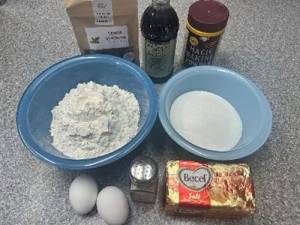
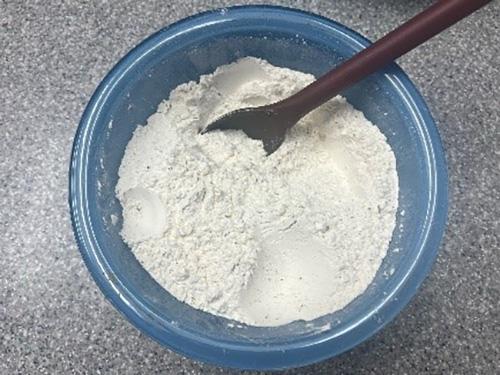
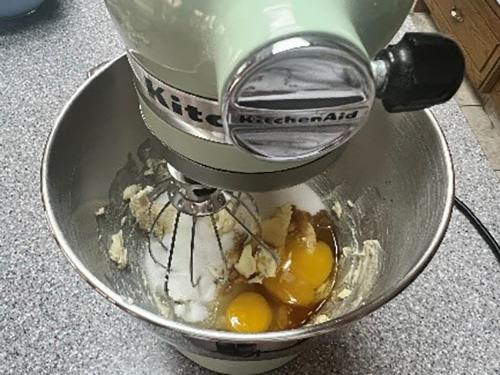
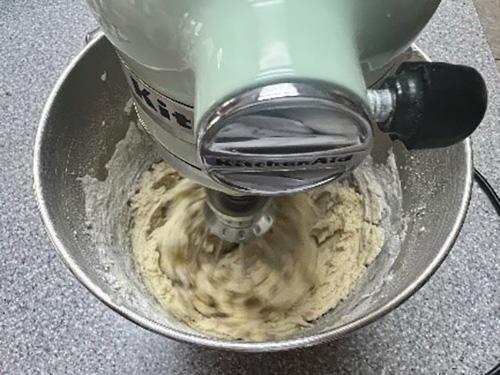
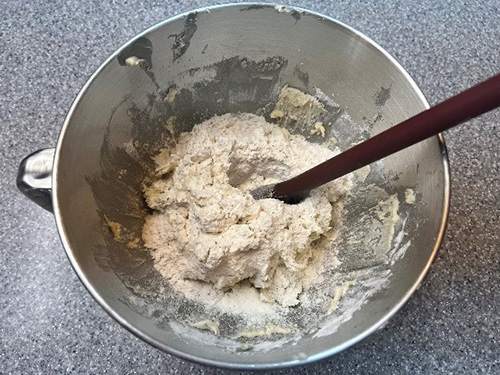
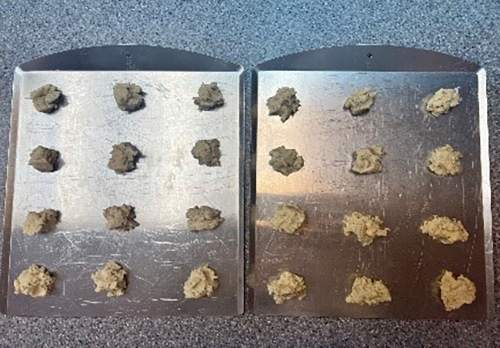



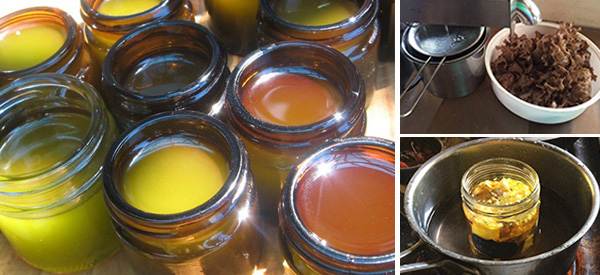

how to make Lemon Verbena Tea?
Steep the leaves in very hot, not boiling water until the strength you want.
Personally, I throw 5 or 6 Verbena leaves and 3 or 4 stevia leaves into a cup, pour boiling water into the cup and leave for 8 to 10 minutes. Feel the side of the cup to determine when it is cool enough to drink. It makes a bright green colored tea that tastes delightful. My daughter’s reaction the first time I made it for her was, “Oh, it makes me happy just looking at it, the color is so pretty!” Of course, more leaves will lead to a darker, brighter color and stronger taste. You can’t ruin it. Until I read this article, I didn’t realize the health benefits it has. I will be drinking it more often now.
I just add a leaf or two (fresh or dried) to my cup of rooibos tea.
How would I make a tincture with lemon verbena?